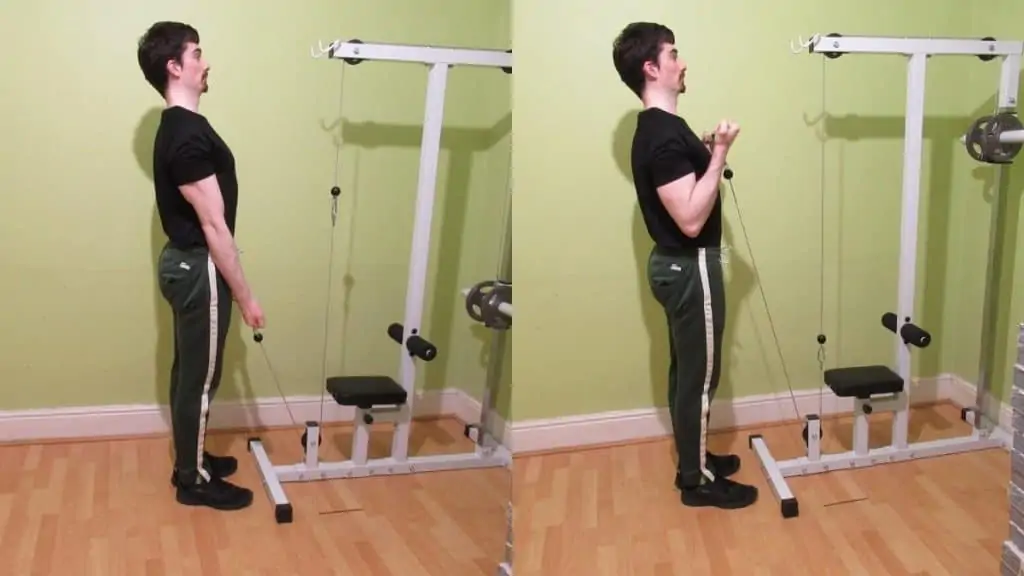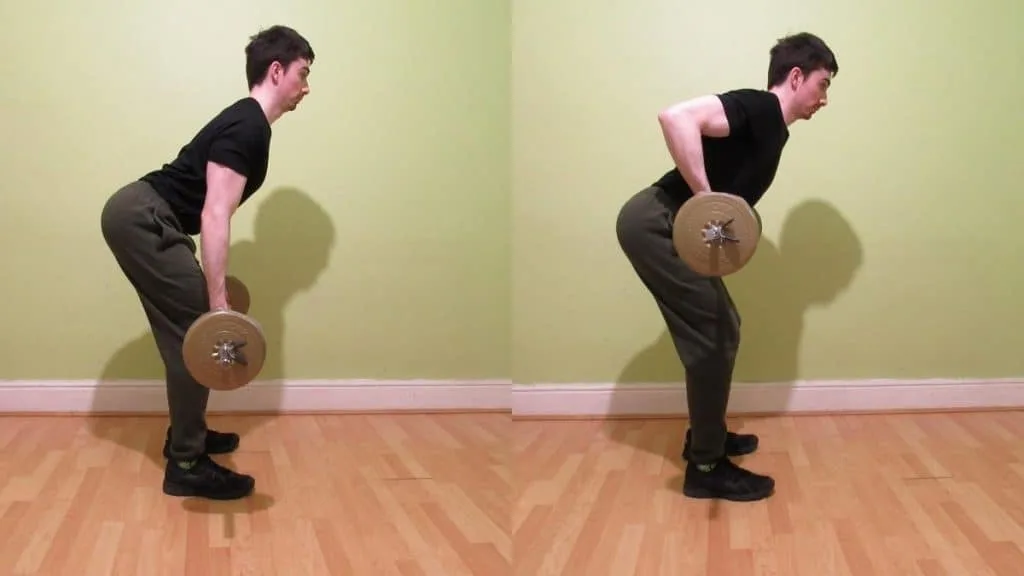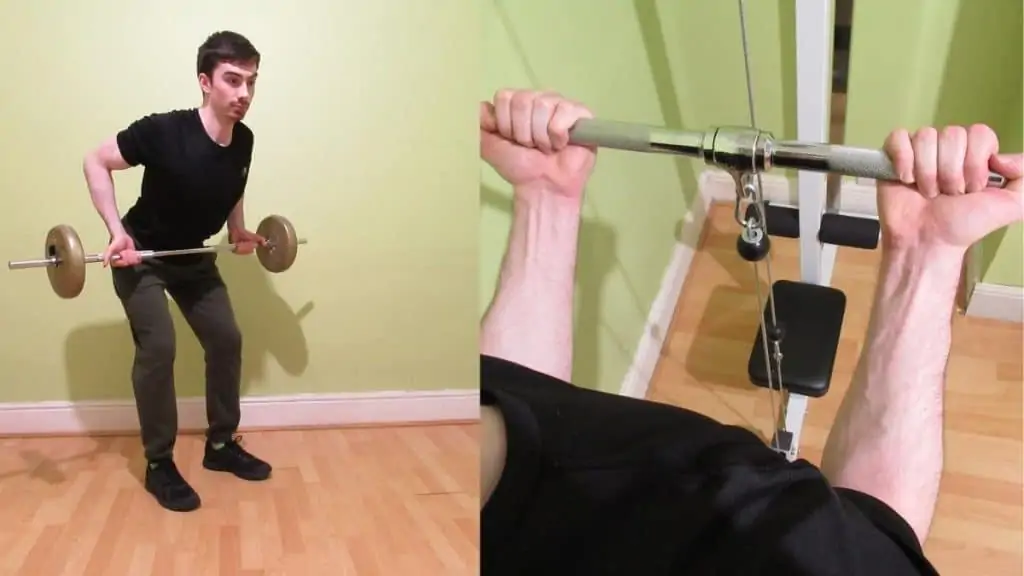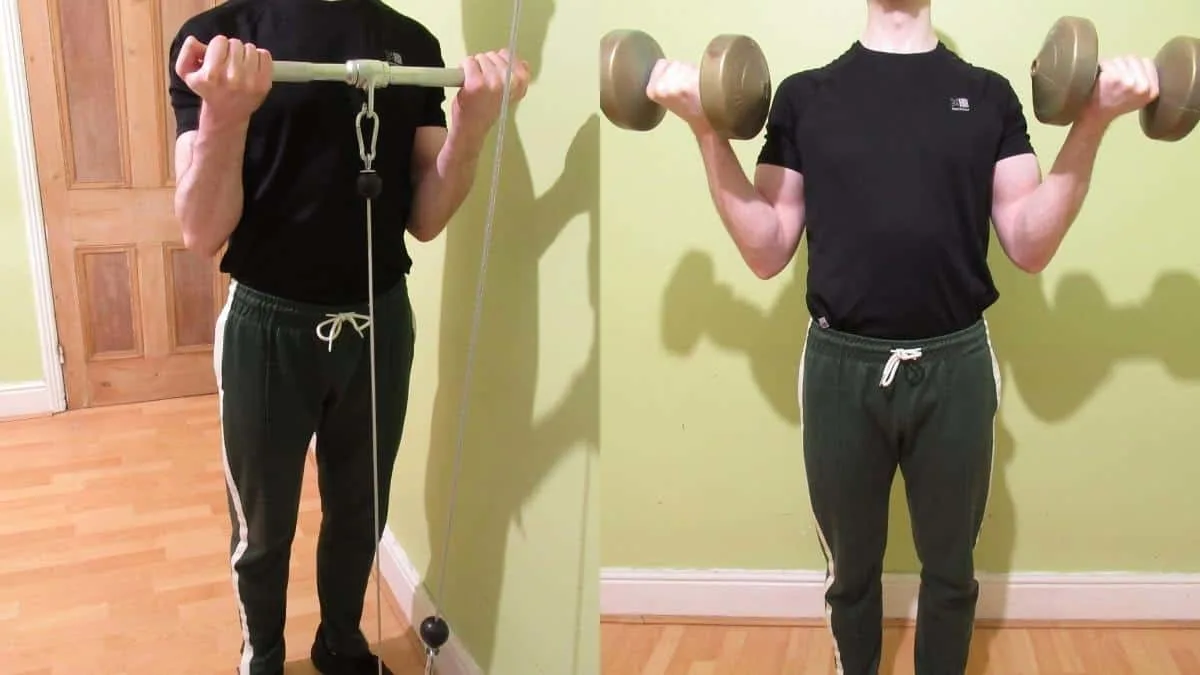Straight bar curls are an excellent exercise for building the biceps brachii muscle because they enable you to overload it with high amounts of resistance.
But sometimes, bicep barbell exercises just get boring. So in order to keep your workouts fresh and exciting, it’s helpful to periodically switch up your routine with novel training drills.
That’s precisely what this guide is all about.
Top 5 barbell curl alternatives
If you don’t have access to a straight bar or just want to find the most suitable barbell curl alternative to add to your routine, check out our list of the top 5 replacements.
1. Chin-ups

If it’s bicep mass that you’re after, then chin-ups should be your first port of call. Although this tried and tested bodyweight drill builds your back muscles as well, the movement is equally effective for blasting your biceps and making them grow because it trains them in a fully supinated and thus maximally contracted position.
You can also vary up your grip to work the surrounding arm muscles, which will help to make your upper body look more proportional. For example, using a neutral or close-overhand grip will shift the emphasis onto your brachioradialis, brachialis, and forearm extensors, which are three muscle groups that are often overlooked in favor of the biceps.
Chin-ups are a great barbell curl replacement because you can continuously gain size by increasing the resistance. They’re also a movement that’s well suited to low-rep training, which is ideal for targeting the fast-twitch muscle fibers (the fibers that grow the biggest and the strongest) of the biceps.
2. Dumbbell curls

As we mentioned in our barbell curls vs dumbbell curls comparison, this exercise is highly effective for building biceps that are symmetrical as well as muscular.
By training each arm independently with dumbbells, you can ensure that both of your biceps are receiving roughly equal work. This helps to make your physique look more aesthetic by correcting current and preventing future muscular imbalances.
Dumbbells are also easier to use than barbells because you don’t need to waste any time loading weight discs onto a bar. You just pick up a pair of weights and start curling. It’s that simple.
Similarly, this exercise is the ideal barbell curl alternative for anyone who experiences wrist pain when curling with a barbell. This is because you can rotate your hands when using dumbbells and keep them in a more natural, joint-friendly position.
3. EZ curls

Performing either barbell or EZ bar curls is a great idea for gaining size because both movements enable you to overload your biceps with plenty of resistance.
However, EZ curls put much less pressure on your wrists and forearms because of the semi-supinated grip. Barbell curls, on the other hand, force you to use a fully-supinated grip for the entirety of the exercise, which is highly unnatural and can cause wrist pain for many lifters.
The trade-off is that curling with fully supinated palms does increase bicep activation a little bit. But the difference isn’t significant enough to warrant sticking to the barbell version if it hurts your wrists or forearms.
The EZ curl is the most obvious replacement for regular curls, which may or may not be a good thing depending on whether you’re seeking a direct substitute or a completely different alternative.
We’ve tried to cater to both scenarios in this guide.
4. Cable curls

Choosing barbell curls or cable curls means deciding between heavy overload and constant tension.
While you can typically put more tension through your biceps with the free weight version, cables provide a more potent pump and consistent resistance.
For this reason, I like to perform both exercises.
However, if you don’t want to use a barbell for whatever reason, then cables are an ideal replacement and are also much more joint-friendly because cable machines help you to stabilize the weight to an extent.
The drawback is that not everyone has access to cables, in which case resistance bands are probably your best bet because they’re very affordable and accessible.
5. Underhand rows

If you want to build your biceps while thickening your back, underhand rows are one of the most effective barbell curl alternatives that you can do for mass gain.
Like curls, underhand barbell rows train your biceps in a fully supinated position and thus maximize their activation. This is because the biceps perform forearm supination (turning your palms up) as well as elbow flexion (moving your forearms toward your biceps).
Hence, this exercise ticks all the boxes.
Conclusion

The best barbell bicep curl alternative depends on your equipment availability and your training goals.
For example, if you train at home, chin-ups are a great substitute because you can perform them with minimal and very inexpensive equipment.
On the other hand, if you want a direct replacement that completely isolates your biceps, then any kind of curl fits the bill. Of course, dumbbells are the most obvious choice. But any weighted object that you can hold in your hands makes an equally good alternative.

